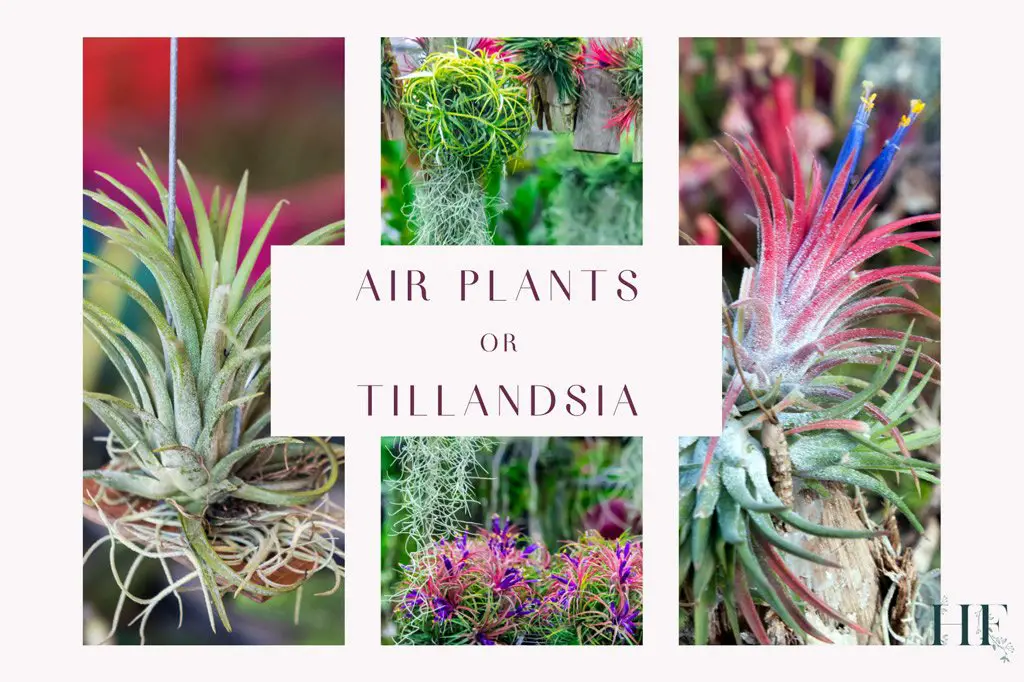I became fascinated with air plants after seeing them being mounted around the home, placed in a terrarium, or even placed in seashells as decorative pieces!
I quickly learned there are a few facts that make these tropical plants special, but I had to start from the beginning by answering the question:
What is an air plant? Air plants, or Tillandsia, are a genus of over 650 species of evergreen, perennial flowering plants that belong to the Bromeliaceae family. They don’t require soil and generally do not need frequent watering.
With their low maintenance requirements, it’s no wonder they are quickly growing in popularity as a houseplant.
Continue reading to discover why air plants are different from other houseplants.
Air Plants
In a nutshell:
| AIR PLANT FACTS | |
|---|---|
| Common name | Air plant |
| Botanical name | Tillandsia |
| Group | Tropical epiphytes, lithophytes and aerophytes |
| Species | Over 650 species |
| Flowering time | Spring to autumn |
| Planting time | All year |
| Hardiness | Tropical |
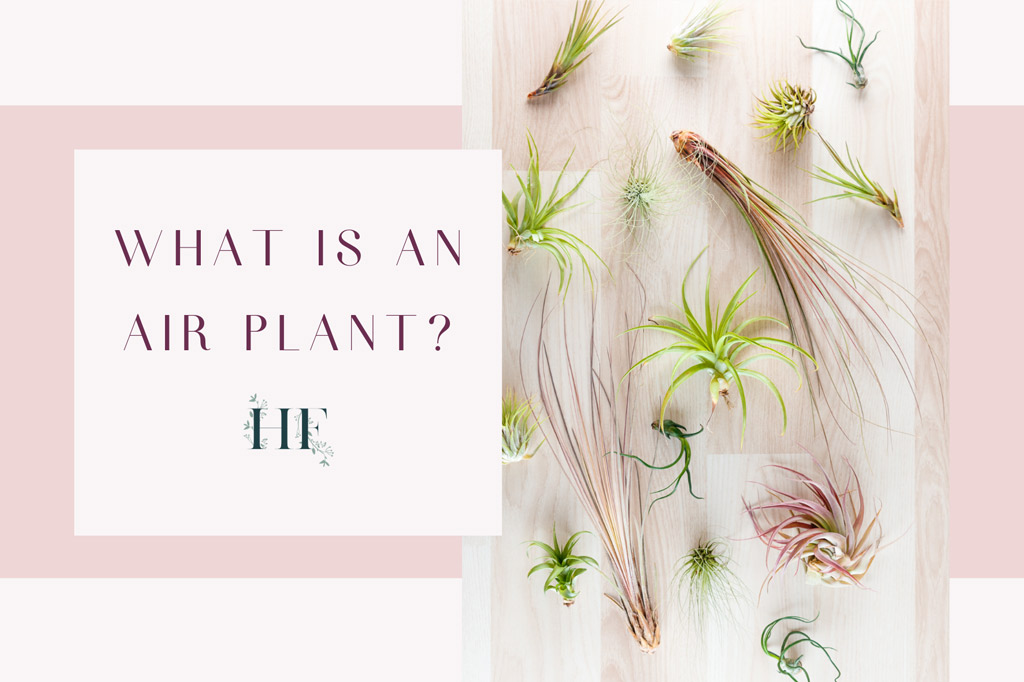
What Is an Air Plant?
Air plant is the common name for Tillandsia, which is a genus (a rank in taxonomy – the hierarchy of biological classification) that contains over 650 species of air plants.
The genus Tillandsia was named by Carl Linnaeus after the Swedish physician and botanist Dr Elias Tillandz (source).
Air plants belong to the Bromeliaceae family (the bromeliad) and they are traditionally divided into seven subgenera (source):
- Allardtia (A. Dietr.) Baker.
- Anoplophytum (Beer) Baker.
- Diaphoranthema (Beer) Baker.
- Phytarrhiza (Vis.) Baker.
- Pseudalcantarea Mez.
- Pseudo-Catopsis Baker.
- Tillandsia.
| TAXONOMY RANKS | |
|---|---|
| Kingdom | Plantae (plants) |
| Subkingdom | Viridiplantae (green plants) |
| Infrakingdom | Streptophyta (land plants) |
| Superdivision | Embryophyta |
| Division | Tracheophyta (vascular plants, tracheophytes) |
| Subdivision | Spermatophytina (spermatophytes, seed plants, phanérogames) |
| Class | Magnoliopsida (: Lilianae – monocots, monocotyledons, monocotylédones) |
| Superorder | Lilianae (monocots, monocotyledons, monocotylédones) |
| Order | Poales |
| Family | Bromeliaceae |
| Sub-family | Tillandsioideae |
| Genus | Tillandsia |
| Species | Over 650 species like Ball moss (T. Recurvata) and Spanish moss (T. Usneoides) |
| Source. |
Air plants are evergreen (they have leaves throughout the year and are always green), perennial (they live more than two years) and they flower.
This genus is an excellent example of diversity because these plants exhibit a multitude of physiological and morphological differences.
An air plant bloom forms a group or cluster of flowers arranged on a stem that is composed of one main branch or multiple branches, also known as inflorescence.
The flowers have bright, vibrant colours that can vary greatly:
- Red.
- Yellow.
- Purple.
- Pink.
- Multicolour.
Plus, an air plant’s foliage may also change colour when it blooms. All these bright colours attract pollinators like moths, hummingbirds and, bats.
What Are Air Plants Epiphytes?
Tillandsia gets its common name “air plants” because of their natural propensity to cling to a variety of surfaces (like telephone wires, tree branches, barks, bare rocks, etc.) since they don’t root on the soil.
Most air plants are epiphytes – among the 650 species of air plants, 635 are epiphytes, the others are lithophytes or aerophytes:
- Epiphytes: They grow on the branches or trunks of host trees without parasitizing them, absorbing nutrients from the air and water.
- Lithophytes: Referred to as saxicolous, they grow on rocks. But they can also live on roofs and even telephone wires.
- Aerophytes: They have a minimal root system and grow on shifting desert soil.
Due to their epiphytic way of life, these plants instead of growing in the soil, attach to other surfaces like trees, cliff ends, wires and rocks. Air plants use their small wiry roots to cling to surfaces.
The term epiphyte derives from the Greek words epi- (meaning ‘upon’) and phyton (meaning ‘plant’) (source).
When they attach themselves to trees, for example, air plants do not feed off the host to grow. They are not parasites to their host, they grow independently (source).
Epiphytes do not absorb their nutrients from the soil, they do it from the air. Their leaves are covered with specialized cells called trichomes (like suction scales) that are capable of rapidly absorbing water that gathers on them and other nutrients from the air.
The rosette shape of the leaves, a common physical characteristic in Tillandsia species, is ideal for forming a funnel for collecting water.
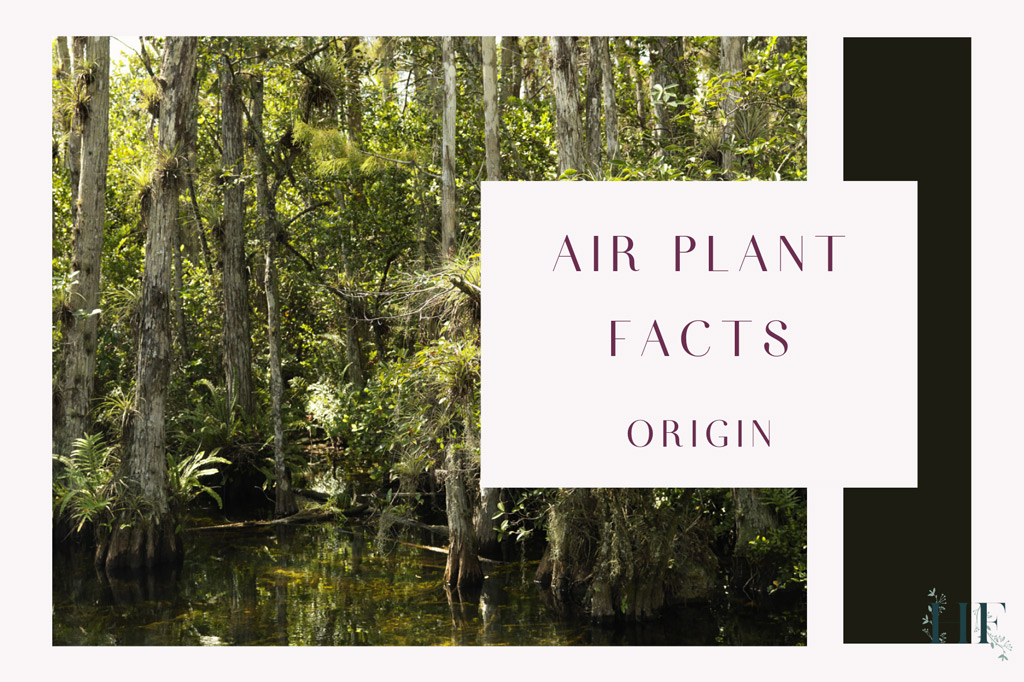
Where Do Air Plants Come From?
Apart from air plants, other well-known epiphytes include mosses, lichens, and orchids. Although more epiphytes are abundant in moist, tropical forests (and are an important element of tropical plant biodiversity), mosses and lichens appear in almost any environment with trees.
Tillandsia is native to the forests, mountains and deserts of northern Mexico and the southeastern United States, Central and South America, including the Caribbean.
In the US, you can find them in the southern states like Florida, California, and Texas (source).
These tropical plants have naturally been established in diverse environments such as:
- Equatorial tropical rain forests.
- High elevation terrains, such as the Andes mountains.
- Rock dwelling regions – especially air plants that are lithophytes.
- Louisiana swamps – especially for Spanish moss (T. Usneoides) species.
Green air plants prefer a cool-humid climate, that’s why they live mostly in the terrestrial shade or in the lower levels of the forests.
In contrast, almost all grey air plants live in precipitation-poor areas with high humidity. They prefer the full sun and they mostly live on the upper floors of the woods and on rocks. Many of the grey species are epiphytes.
Read also: Air Plant Origin and 5 Most Common Tillandsia Varieties.
Air Plant Facts
Air plants add a sparkle of colour, texture and form to your home. They are undeniably charming, but air plants are way more than exotic plants!
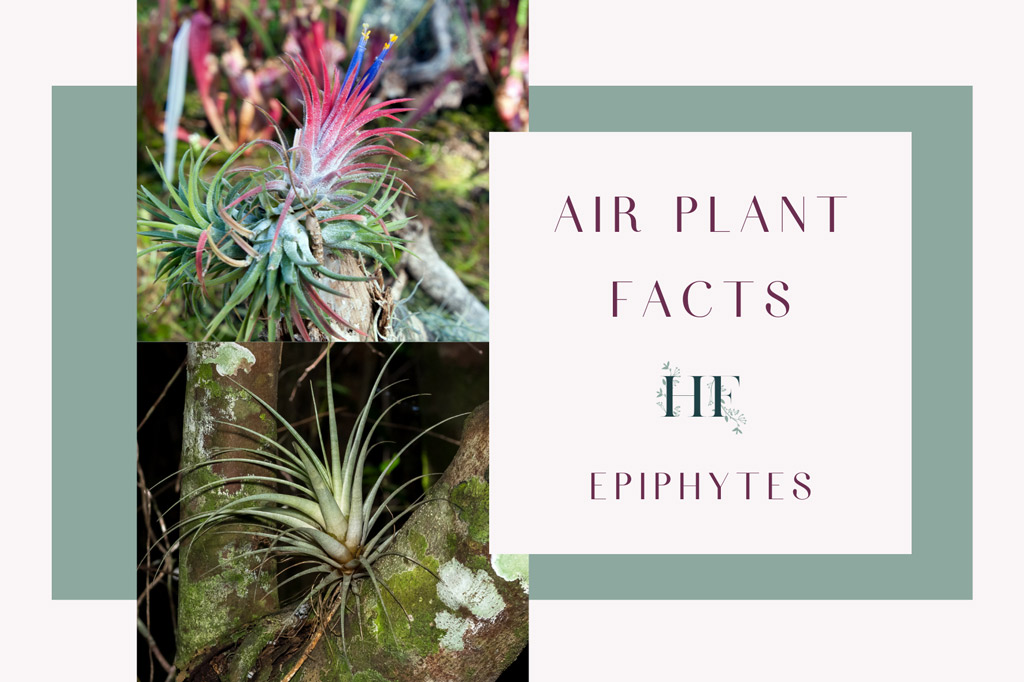
1) Air Plants Are Soil Rebels
Do air plants need soil?
This is the first shocking fact since you would assume that all plants grow on soil (or water), but not air!
These plants survive without soil. Most Tillandsias are epiphytes, which means that in nature air plants grow on other plants. These air plants cling to tree trunks, for instance, rather than rooting in the ground.
On the other hand, air plants that are lithophytes will grow on rocks.
At home, you can mount them on driftwood or a wood stand, and display them on terrariums, a vase with pebbles, inside seashells or on a traditional ceramic planter. You can also hang them on a wall or from the ceiling.
Read also: 10 Air Plant Display Ideas that Won’t Harm Tillandsias.
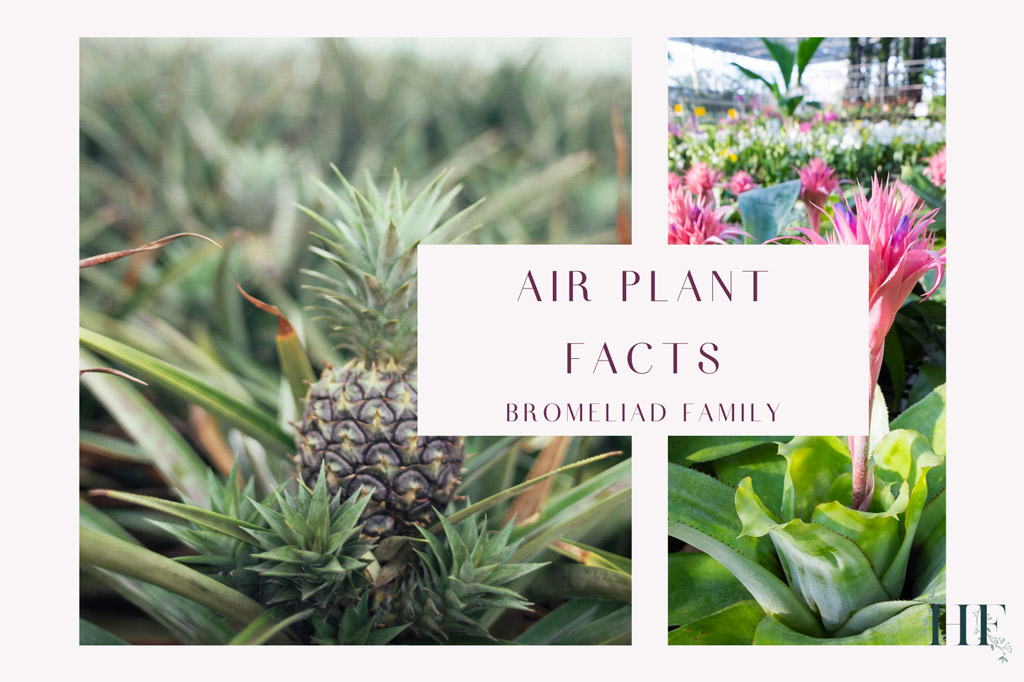
2) They Have a Famous Cousin
Tillandsias are members of the Bromeliad family, spiky-flowered tropical plants. This makes them close cousins to pineapples too.
Bromeliads are important food plants for many peoples. Here are some examples (source):
- Tillandsia Erubescens: The Pima people of Mexico occasionally consume their flowers.
- Tillandsia Recurvata: The Pima also eat these air plants due to their high sugar content.
- Tillandsia Rubella and Tillandsia Maxima: Both are consumed in Argentina and Bolivia.
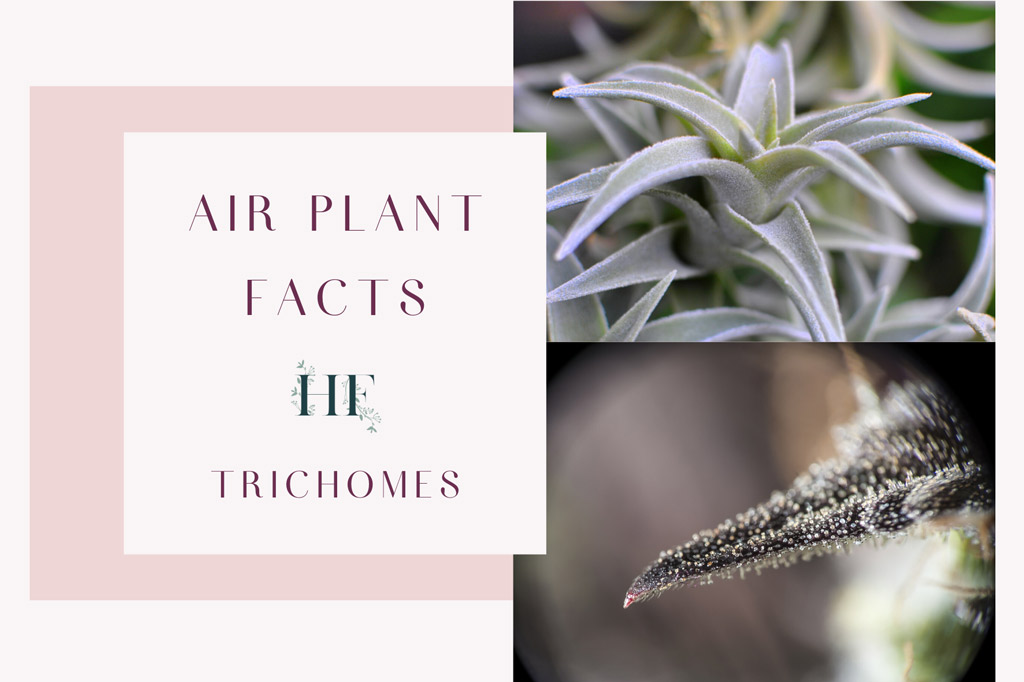
3) Tillandsias Are Smart Eaters
Do air plants have roots?
Yes, air plants have tiny roots which they use to attach themselves to surfaces, rather than to absorb nutrients. This means they don’t need soil.
Apart from not needing soil, air plants don’t use roots for getting nutrients as other plants do. Instead, they use trichomes (little scales on their leaves) to get all the nutrients from the air (including moisture, i.e., water).
Microscopically speaking, trichomes look like little cups that open and close to absorb and retain moisture.
Some air plants are “fuzzier” than others, and this is all due to the number of trichomes they have. Air plants with fuzzy leaves and a silvery or dusty surface are xeric types. These have adapted to have more trichomes in response to dry climates and environmental conditions.
Read also: Air Plant Care – 8 Steps to Grow and Keep Tillandsias Alive.

4) Air Plants Flower Only Once
An air plant might flower, but only once in its lifetime!
Flowering has an important meaning for air plants. It signifies the peak of their life cycle. After it flowers, the plant will eventually die.
Depending on the air plant species, these blossoms last from a few days to a few months. Like I mentioned before, these flowers can have a whole variety of beautiful bright colours (see photo)!
Surprisingly, most air plants’ blooms aren’t scented. Some scented types of air plants include (source):
- Tillandsia Diaguitensis: It scents like the citrus blooms.
- Tillandsia Cyanea: It has a nutmeg scent.
- Tillandsia Duratii: It smells like grape soda.
Read also: Air Plant Life Cycle, Reproduction and Growth Rate.
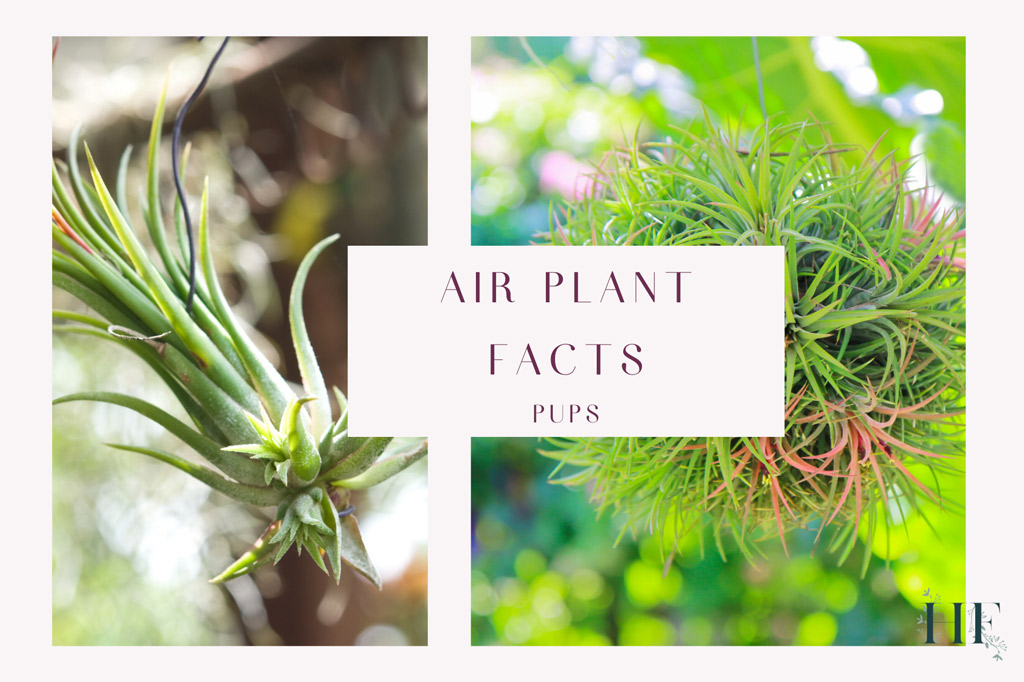
5) Tillandsia Species Have Pups
Another curiosity of air plants is that, after they flower, they have pups (also referred to as offsets)!
Depending on the air plant species, they can have two to eight offsets. These baby Tillandsias grow around the base of the mother plant.
You can leave the pups with their mother, living as a cluster and forming lovely “Tillandsia balls.” This is what happens naturally in the wild.
However, you can also separate them once they are about the same size as the mother and re-arrange them in other containers. The process of separating the pups from the mother is called “division” and it’s a way of propagating air plants.
Read also: Air Plant Propagation Guide and Pup Care.

6) Some Air Plants Are Pseudobulbs
By now, you can see that air plants are a great example of diversity. They have many physiological and morphological differences.
Air plants come in many shapes and colours… and have different flowers… Plus, some air plants have pseudobulbs!
The pseudobulb is a storage organ found in many epiphytic plants (like most air plants) and also in terrestrial sympodial orchids (source).
The base of these air plants has a bulb shape. But they are considered pseudobulbs because most have empty cavities inside. In the wild, ants form colonies on those cavities.
Some examples of air plants that have a pseudobulb form include:
- T. Caput Medusae.
- T. Seleriana.
- T. Pseudobaileyi.
- T. Butzii.
- T. Streptophylla.
7) Air Plants Give Green Thumbs Up
As soon as an air plant is soaked in water, the green assimilation tissue below the suction scales (the trichomes) becomes visible again.
As a result, the air plant gets green?? Now it can absorb more light. 🙂
8) Some Tillandsias Were Threatened
In the 1980s, one of the most popular air plants, the T. Xerographica (see photo below) was almost driven to extinction. The T. Harrisii was also on the brink of extinction).
Since then, growers and exporters have to follow strict regulations for the export and trade of these plants. They need to be cultivated in nurseries rather than harvested from the wild.
So, when purchasing, make sure that they are nursery-grown plants and the suppliers are certified for Tillandsia exportation.
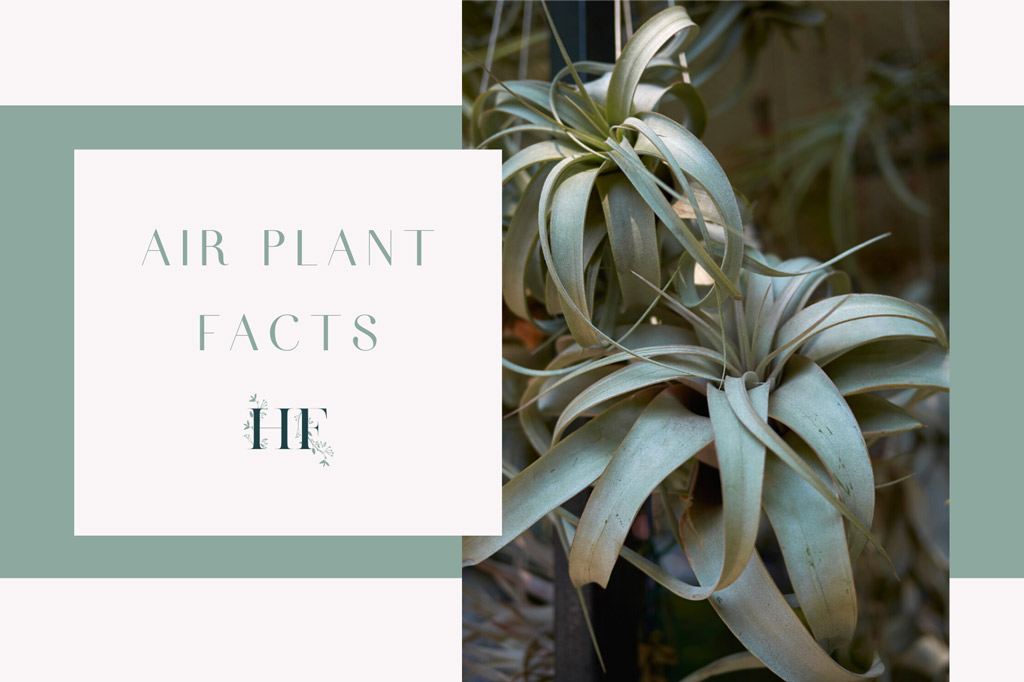
9) Air Plants Follow a CAM Photosynthesis
Air plants are also unique in the way they photosynthesize through a process called CAM cycle (crassulacean acid metabolism cycle).
Tillandsia species close their stomata (the pores in the leaves, stems, and other organs) during the day to prevent water loss and open them at night to fix carbon dioxide and release oxygen (source).
In a few words, they release oxygen at night, instead of during the day like most plants do.
This type of photosynthesis is a result of an adaptation of air plants to arid conditions. This allows them to preserve water, which is necessary because they are epiphytes.
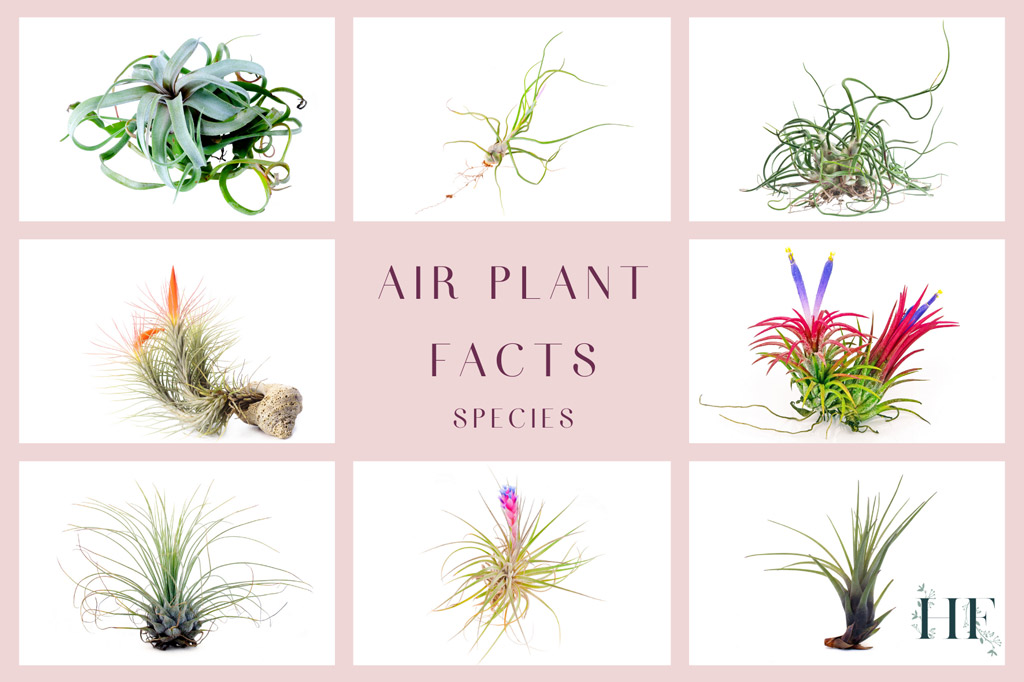
10) Tillandsia Species Are a Guess Game
By now, you can see that air plants are a great example of diversity. They have many physiological and morphological differences.
With over 650 different species, which one is mine?
You are not the only one having a hard time identifying your Tillandsia species.
If the fact that there are over 650 types is not challenging enough… To complicate matters just a bit more… Two air plants of the same variety may look completely different due to climate, for instance.
“The same type will look different in Florida and in California. Also, air plant breeders cross varieties so frequently that you are never really going to see two air plants that are identical.”
Ryan Lesseig, co-owner of Air Plant Design Studio.

